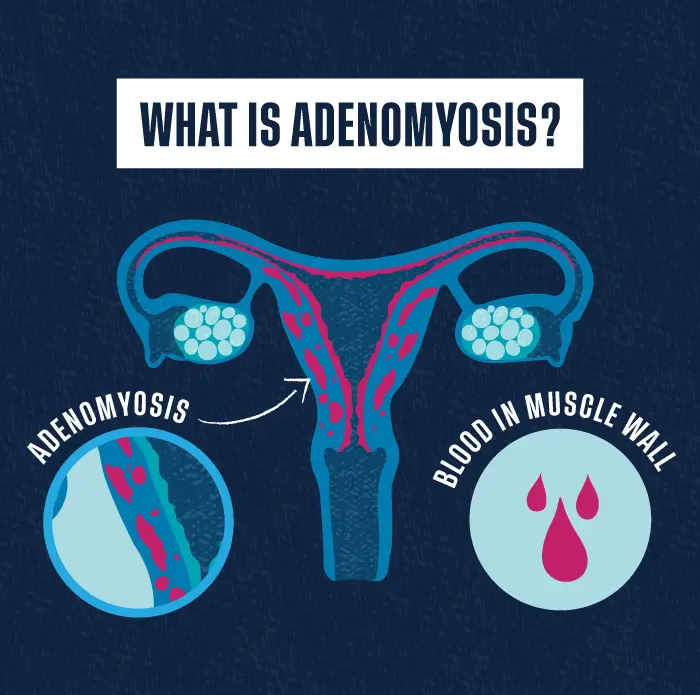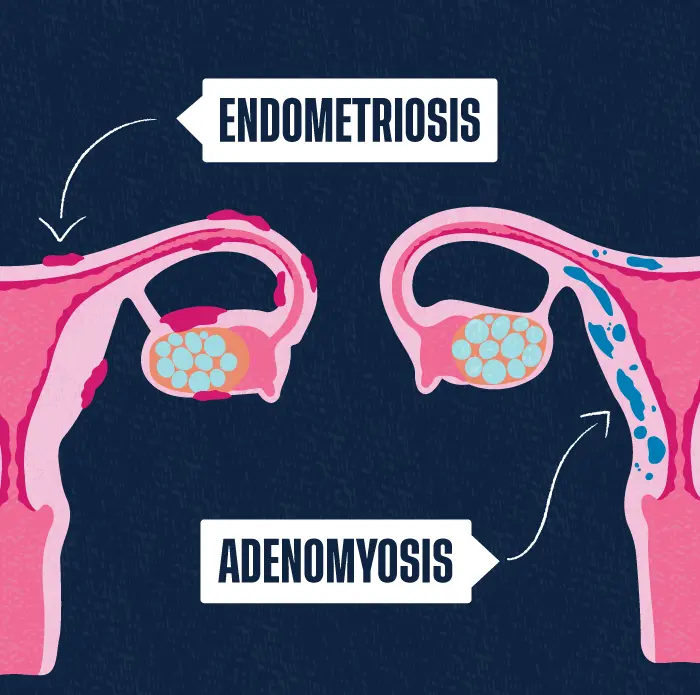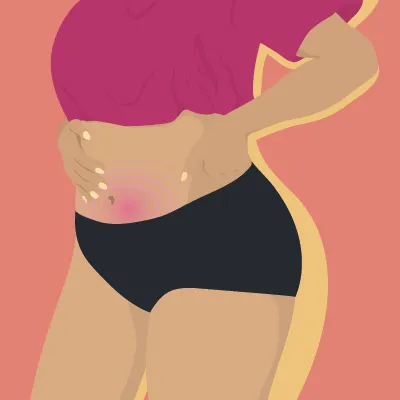Mar 25, 2024
All About Adenomyosis
You've likely come across endometriosis (endo), but have you ever heard of adenomyosis? It's like the lesser-known sibling of endometriosis, flying under the radar despite affecting around one in five people who experience periods. Crazy, huh? Well, fear not, because we've teamed up with the team at Jean Hailes to spill the beans on adenomyosis symptoms, how it's diagnosed, and what you can do about it.
What is adenomyosis?
Adenomyosis is a condition where cells similar to those that line the uterus are also found in the muscle wall of the uterus (usually in the back wall). When you have your period, the cells in the muscle wall also bleed. But because they are trapped in the muscle layer, they form little pockets of blood in the muscle wall. If you think that sounds unpleasant, you’d be right – painful periods are a common symptom of adenomyosis. (More on this later.)

Adenomyosis can cause fertility problems because the condition makes it hard for an embryo to implant into the uterine lining. However, not all people with adenomyosis will have fertility problems, and not all fertility problems are linked to adenomyosis.
How is adenomyosis different from endometriosis?
Adenomyosis and endometriosis are similar but not the same thing. Let’s break it down.
| Condition | Adenomyosis | Endometriosis |
|---|---|---|
| What it is | Cells similar to those that line the uterus are also present in other parts of the body. These cells are called endometrial tissue, which makes things a little confusing! | |
| Where it is | In the muscle wall of the uterus | Mainly in the pelvis and reproductive organs |
So yes, they both are related to endometrial tissue, but it’s where that tissue is located that makes it adenomyosis or endometriosis.

These conditions do share some similarities, which can make diagnosing adenomyosis a bit tricky. Pain (during periods, sex, or more persistently) and heavy bleeding are common symptoms of both conditions. Fertility challenges are also associated with endometriosis and adenomyosis. It’s also possible to be diagnosed with both conditions.
What causes adenomyosis?
The exact cause of adenomyosis is unknown, but it may be associated with:
- Uterine surgery
- Cells occurring in the muscle wall of the uterus before birth
- Inflammation of the uterine lining after having a baby, causing cells to pass into the weakened muscle layer
Because the cause of adenomyosis is still somewhat of a mystery, there are currently no known ways to prevent it.
What are the symptoms of adenomyosis?
People may experience different symptoms, but about two-thirds of those with adenomyosis experience:
- Painful periods
- Heavy periods
- Fatigue or dizziness due to iron deficiency (anaemia)
- Painful sex (dyspareunia)
- Persistent pelvic pain.
How is adenomyosis diagnosed?
Adenomyosis cannot be diagnosed from blood tests or tissue samples (biopsies). And like endometriosis, it can take time to diagnose and rule out other possibilities. Unfortunately, there is a perception that period-related pain is a normal thing, which can make it difficult to diagnose gynaecological conditions. The good news is the diagnosis time for endometriosis is gradually lowering, which is hopefully a sign that it will happen for adenomyosis too!
If you are worried about your symptoms, see your GP or medical professional as soon as you can. They will ask questions about your symptoms and may ask to do a vaginal examination. If you have adenomyosis, your uterus might feel tender or enlarged. Your doctor may organise for you to have an ultrasound or MRI scan to exclude other conditions such as fibroids. They may also refer you to a gynaecologist to do further tests if needed.
How is adenomyosis managed?
How you can manage adenomyosis depends on a few factors. Your symptoms, age, and whether you want to have a child or more children will impact your management plan. Your doctor will guide you through your options, depending on the severity of your adenomyosis and plans for pregnancy.
- Pain relief medication
- Hormonal treatment
- Surgery
- Radiological treatment
Self-care practices such as the below may be beneficial, in addition to what your doctor recommends for you.
- Gentle exercise
- Yoga
- Meditation
What works for some people mightn’t work for others, so you may need to try a few approaches until you learn what suits you best.
If anything in this blog feels like it applies to you, chat with your GP or someone you trust as soon as you can. Your symptoms may or may not be related to adenomyosis but it’s important not to ignore them. The sooner you start the diagnosis process, the sooner you’ll receive answers and you can explore management options if needed.
Love, Libra x
Essity Australasia makes no warranties or representations regarding the completeness or accuracy of the information. This information should be used only as a guide and should not be relied upon as a substitute for professional, medical or other health professional advice.







